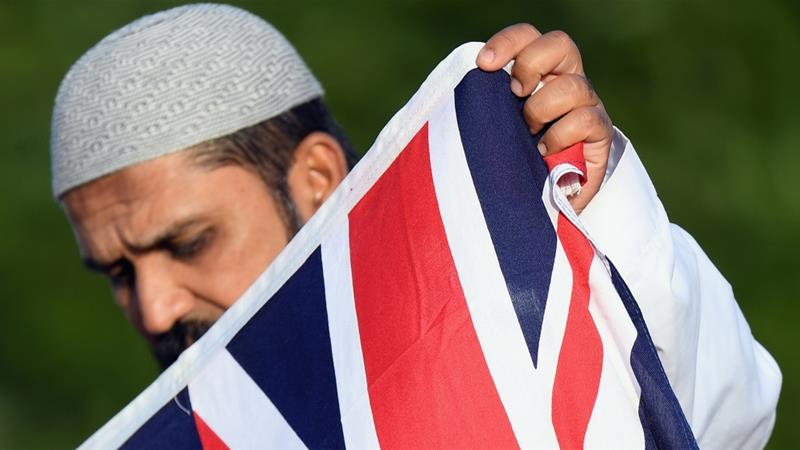The New Zealand massacre and the weaponisation of history
Brenton Tarrant suffers from common historical delusions.
On March 15, Australian-born Brenton Tarrant attacked two mosques in Christchurch, New Zealand, killing 50 people using five guns inscribed with the names of various historical figures and battles. It was not the first time a white supremacist was weaponising the past. Twisted representations of history have driven the far right across the globe - fromIndia to Russia to the United States and all the way to Australia - since its inception.
The inscriptions on Tarrant's weapons and his 74-page online manifesto reflect the popular "clash of civilisations" narrative which reduces history to an epic struggle between Christendom and Islam. In his sick mind, Tarrant surely believes that he, too, is a hero in this imagined war, a crusader on a mission to stop the Muslim "invaders".
The problem is that the historical figures and events he sees as an inspiration, very much disprove the belief that there is a clear-cut tectonic fault line between the Christian and Islamic worlds and that they are in constant conflict with each other. Here are just a few examples of how Tarrant got history wrong.
The not so glorious Crusades
Tarrant, like his idol Anders Breivik, who in 2011 detonated a bomb in central Oslo killing 8 people before massacring 69 people on an island - most of them teenagers - seems to be obsessed with the medieval Crusades. He is particularly fond of the Knights Templars, the Crusade-era order of Christian warrior monks, which still captures popular imagination, particularly among the alt-right.
The order was founded in 1119, 20 years after the first Crusade capturedJerusalem, to protect Christian pilgrims making their way to the Holy Land. Although its members were sworn to reject the personal pursuit of wealth, the order soon came to control vast amounts of money and properties, and when infighting broke out among Christian leaders in the Holy Land, it readily took part. The Templars played a key role in the succession crisis in the Kingdom of Jerusalem in the 1180s, which ultimately paved the way for Muslim Commander Salah ad-Din ibn Ayyub, known as Saladin, to capture the city in 1187.
Throughout the 400 years that the crusades lasted, Christians fighting other Christians was a regular occurrence. In fact, from the very beginning, on their way to Jerusalem, the Crusaders came into major conflict with the Christian Orthodox states they passed through, as they raided and pillaged their cities and villages. In 1204, they besieged and sacked Constantinople, the capital of the Christian Byzantine empire - a brutal act for which Pope John Paul II had to apologise 800 years later.
The Crusaders also often "broke religious ranks" and allied with different Muslim forces. The Fatimid ruler of Egypt, for example, backed the Christian army fighting the Seljuq Turks and supported them during the siege on the city of Antioch in 1098. Various Muslim rulers also used alliances with Crusaders to fight each other; the Mamluk commander Mu'in ad-Din Unur, for example, sought help from the Christian principalities when he was attacked by Turkish leader Imad ad-Din Zengi.
Throughout the Crusade era, several prominent Muslims and Christians sought to forge friendly diplomatic relations. Usama ibn Munqidh, a Syrian warrior who fought European knights with Saladin, played the role of an emissary mediating alliances between Christian and Muslim rulers; he also wrote extensively about his encounters with Christians, some of whom he befriended.
Saint Francis of Assisi, founder of the Franciscan order, travelled to Egypt in 1219, where Crusaders laid siege on the town of Damietta. Hoping to establish a religious dialogue, he crossed enemy lines and met with Sultan Malik al-Kamil, the nephew of Saladin - a dangerous undertaking for which he is still celebrated today. In his recent outreach efforts to the Muslim world, Pope Francis has often referred to the deeds of his namesake.
The Italian connection in the Ottoman fleet
In his gun inscriptions, Tarrant also focused overwhelmingly on Ottoman history - apparently being inspired by a number of trips he undertook to Turkey and the Balkans. He makes reference to the 1571 naval engagement in Lepanto, the siege of Vienna of 1683, and conflicts involving the Ottomans in the Balkans, from the 1389 battle of Kosovo to the Balkan wars.
The Battle of Lepanto was fought between the Holy League, an alliance which included Spain and Italian states, and the Ottoman navy in the Corinthian Gulf. It resulted in a decisive victory for the League. In modern days, the battle has taken on mythic proportions and is seen by many as the first major defeat of the Ottoman Empire by the Christian world. However, Tarrant's historical reference to Lepanto does not fit neatly into the clash of civilisations narrative.
One of the main protagonists in the battle, for example, was Kilic Ali Pasha, one of the Ottoman naval commanders in charge of the sultan's navy in Lepanto. His real name was Giovanni Galeni, an Italian from the Calabria region, captured as a galley slave, who rose through the ranks of the Ottoman navy to become one of its most famous admirals.
He fought quite viciously against his Italian compatriots and although he lost the Battle of Lepanto, he did help the Ottomans capture Cyprus from the Venetians.
Muslims fighting Muslims, Christians fighting Christians
Tarrant also pays homage to the Polish army which came to Vienna's rescue during the Ottoman siege of Vienna, celebrating an ostensibly Christian defeat of the Ottomans.
But this battle too did not follow the strict logic of a civilisational clash. Tatar Muslims formed an elite part of the Polish troops which drove the Ottomans from the gates of Vienna.
Tarrant also refers to the battle of Shipka pass during the Russo-Turkish war of1877-1878, when an outnumbered Bulgarian and Russian force defeated the Ottomans. While the war ejected the Ottomans from historically Bulgarian territories, Russia did not send its army way beyond its borders just to help its Christian brethren. St Petersburg had some serious imperial ambitions for the Balkans, and like western European powers, it had joined the fray to dismantle the Ottoman Empire and claim its territories.
While Tarrant celebrates the struggle of Balkan nations, like the Bulgarians and the Serbs against the Ottoman empire, he seems ignorant of the fact that Christian Balkan states fought against each other just as much. The very first war Bulgaria fought after its liberation from "Muslim rule" was against its Christian neighbour,Serbia in 1885-1888.
After defeating together the Ottoman empire in the first Balkan war of 1912 (a reference to which was also inscribed on Tarrant's gun), the following year, Greece and Serbia, along with Romania, turned on their ally Bulgaria and captured some of its territories. And only two years later, Bulgaria would join its former Muslim "master", Turkey, to fight with the Central Powers against the Allied Powers in World War I.
That war and conflict have much more to do with political considerations, self-aggrandizement and greed than with religion or "civilisation" is something that white supremacists like Tarrant consciously or unconsciously ignore. After all, seeing nuance and thinking critically are not among their priorities.
To find such level of historical delusion among the likes of Tarrant and Breivik is not surprising, but unfortunately, this type of thinking is not limited to their tight-knit far-right circles. The clash of civilisations narrative is also quite popular among the higher echelons of power across Western capitals.
And while seeing civilisational conflict where there is none made Tarrant massacre 50 innocent people, this belief among the truly powerful has killed millions.
The views expressed in this article are the author's own and do not necessarily reflect Al Jazeera's editorial stance.
https://www.aljazeera.com/indepth/opinion/zealand-massacre-weaponisation-history-190322062222288.html



0 Comments:
Post a Comment
Subscribe to Post Comments [Atom]
<< Home